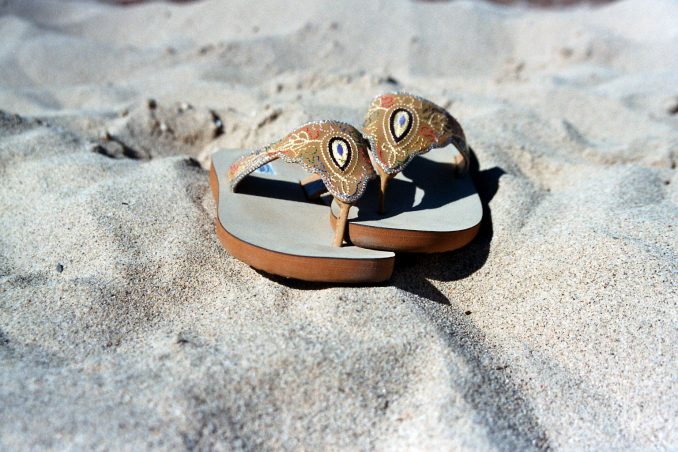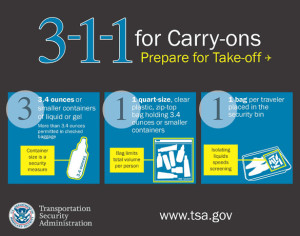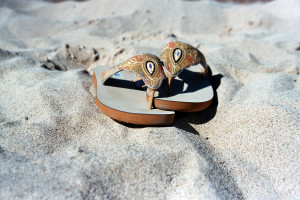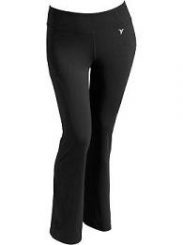
Maximum capacity to avoid airport trouble is 1 Quart (0.94 Liter/946 ml); practically speaking, it means that your bag shouldn’t be larger than 6 x 9″ (15.24 cm x 22.86 cm) or 8 x 7 ” (20 cm x 17.5 cm). Though this was issued by a US Agency, the standard is pretty much the same for Canada and the rest of the world…
One advice : don’t cheap on the quality. I highly suggest you buy bags made to freeze food; they’re thicker and more resistant, especially the side and the zipping slide.Not only useful to pass security check smoothly at the airport, these bags have plenty of other uses!

-pack small wet items (swimsuit, socks, facecloth, undies, …)
-carry safely small valuables, sea shells or souvenirs (put it in a bag, blow some air, zip it and make sure it doesn’t get punctured!)
-avoid leak by putting some of your potentially leaky container in a bag
-fill one with the content of a box of wet wipes (safer in checked luggage); it will be useful at many occasions and is taking less space than boxed wipes
-carry some large ones to pack and protect your electronics from sand and water damage when at the beach or in very humid weather
-same goes for important documents (passport, wallet, ID’s, etc.)
-pack your shoes or sandals full of sand in a bag to avoid soiling your whole luggage
-last but not least: change your zip top for your carry-on if it punctured, over-“stretched” or simply worn out!

NOTE:
Giant zip top-like compression bags used to squeeze and squish your clothing and other items by removing air can be useful. BUT they can also turn into a weight nightmare. When you compact more stuff in the same space, your luggage can turn into a heavy mess and you increase your risk of having to pay overweight luggage fees at the airport (trust me, you don’t want to get caught on this). Use cautiously.




Be the first to comment